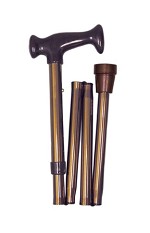- Providing Helpful Healthcare Products Since 1999 | Our Hours: 8 AM - 5 PM CST Mon - Fri
- +1-877-750-0376
How to Choose The Best Cane for Your Arthritis
How To Keep Gardening With Arthritis Pain
April 30, 2014National Stroke Awareness: Reduce risk due to wheelchair use
May 4, 2014If you suffer from arthritis or another disability, you probably know that walking canes come in many forms. You can buy canes with different materials, colors and style of handle. There also are important differences in cane design that will affect their function and safety.
When a cane is chosen properly and used right, it will improve your balance and reduce your chance of a fall. It also will lower the weight on your joints in the lower body, which can reduce arthritis pain.
How to Choose Type and Fit
The type of cane you see the most are single point, quad or three point. Most people with arthritis are probably best with a single point cane. People who have a neurological issue should probably choose a quad cane, as this type allows you to put more weight on it.
When you are being fitted for a cane, you should wear walking shoes. Stand tall with arms at your sides. The top of the cane should be at the level of the crease in the wrist. If the cane is too tall, you will not get enough support. If it is too low, you will have to slump, and that can lead to discomfort.
How to Walk Correctly With a Cane
People often think they should use the cane on their weak side. Actually, the cane should go on the stronger side, but you move it with the weak side. By using the cane in the hand opposite the weak side, your body is shifting its weight to the strong side.
When you walk, you should put the cane about two inches in front or to the side. You should not put the cane way out in front of you. Move your affected leg and cane as one, so that both sides share the weight.
To climb steps, move your good side first. Follow that with the weaker side and cane at once. When you go down steps, put the weak leg in front first. Then follow with the cane and the stronger leg.
Cane Products for Arthritis
We have many excellent canes available for people with arthritis or other disabilities. The Adjustable Folding Cane can adjust from 33-37 inches, and features a comfortable and ergonomic handle. The In-Step LaserCane is a good choice for people who have arthritis, Parkinson’s disease, stroke and other disabilities.

